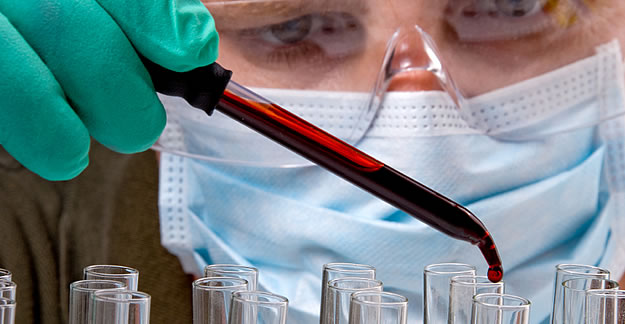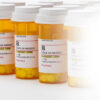Waiting for results of a lab test? Not to make you worry even more, but — according to federal regulators — you might not be 100% able to trust those results, if they come from certain laboratory-developed tests, or LDTs. An LDT is a test that’s designed, developed and used within a single laboratory. LDTs cover a wide range of diagnostics, from basic things like a CBC (complete blood count) to complex multigene panels. The common thread is that the tests are only used in that particular lab, which means the test may differ from lab to lab.
In the past, LDTs have not typically been required to undergo premarket review for safety and efficacy, the way medical devices and drugs are. Health Affairs explains that “at present, the FDA exercises essentially no regulatory authority over LDTs.” No premarket review — and also no required adverse-event reporting.
That said, it’s not totally the Wild West. According to the American Association for Clinical Chemistry, “once a laboratory has validated a test for in-house use, methods of quality assurance with regard to that test are carefully and continually followed by the laboratory.” It’s up to the lab, then, to monitor the test to make sure results remain “accurate, precise, sensitive, and specific as originally validated.” The Centers for Medicare and Medicaid Services regulates laboratories performing such tests through the Clinical Laboratory Improvement Amendments (CLIA), and state laboratory certification programs and professional accrediting bodies also play a role in regulating tests.
Browse This Article
What Do LDTs Do?
When LDTs were in their infancy in the 1970s, there weren’t many of them and they used fairly simple technologies, typically to diagnose rare diseases and conditions in small numbers of patients, according to the FDA (pdf). One example is a test to measure levels of sodium. But advances in science and technology have led to more complex, more widely available tests. These days, LDTs are used to diagnose common yet serious medical conditions like cancer and heart disease. Other more complex LDTs measure or detect DNA variations in a single blood sample, which can be used to help diagnose a genetic disease.
What’s the Problem with LDTs?
Concerned about accuracy and other issues around LDTs, the FDA is taking a closer look: In a recent report, the agency evaluated 20 specific LDTs for Lyme disease, ovarian cancer, breast cancer, whooping cough, fibromyalgia, coronary heart disease, and fetal chromosomal abnormalities.
The result: 20 tests (cited in a pdf here) can cause real harm due to false-positive results, when patients were told they have conditions they do not really have, causing unnecessary distress and resulting in unneeded treatment.
On the flip side is the problem of false-negative results, in which patients’ life-threatening diseases go undetected — and untreated. Other LDTs provided information with no proven relevance to the disease or condition for which they are intended for use, while still others are linked to treatments based on disproven scientific concepts.
“While certain LDTs have undoubtedly brought benefits to many patients, the increase in complexity and patient volume brings a concomitant risk that patients will be harmed — and, in fact, have been harmed — and highlights the need for appropriate oversight,” the FDA wrote in its report. “It is not the intention of this report to undermine the value of LDTs, but rather to highlight that the current oversight framework is inadequate and, hence, why FDA has proposed to increase its oversight for these tests.”
Why Does FDA Want More Oversight of LDTs?
The FDA says that it is often claimed that regulation of LDTs is unnecessary because the tests are sufficiently regulated under CLIA (Clinical Laboratory Improvement Amendments). While CLIA created requirements that are essential for ensuring that laboratories and their personnel maintain standards of high quality (i.e., it is primarily concerned with the process of testing), compliance with CLIA regulation alone does not ensure that the diagnostic devices themselves are effective.
Therefore, the FDA needs to have oversight to address the following:
- Lack of evidence supporting the clinical validity of tests
- Deficient adverse event reporting
- No premarket review of performance data
- Unsupported manufacturer claims
- Inadequate product labeling
- Lack of transparency
- Uneven playing field
- Threats to the scientific integrity of clinical trials
- No comprehensive listing of all LDTs currently being used
How Can the FDA Make Tests Safer?
To help healthcare providers and patients better rely on the thousands of laboratory tests that are used every day to diagnose disease or other conditions, or to guide treatment and encourage the advance of personalized medicine, on October 3, 2014, the FDA notified Congress of its intent to issue a draft oversight framework (more regulations determining safety and efficacy) for LDTs based on risk to patients.
Higher-risk LDTs, reports the journal Health Affairs, will be subject to more rigorous regulatory requirements than will lower-risk LDTs. For instance, while adverse event reporting requirements and registration will still be required for lower-risk LDTs, they will not be subject to premarket review requirements, which, at least in some cases, will require the manufacturers of high-risk tests to conduct clinical trials.
What Can You Do?
There are some alternatives to the 20 specific LDTs cited in the FDA’s report. Ask your doctor about the type of test he or she is prescribing and whether it has a record of accurate results. Also ask the doctor if another test from a different lab may be warranted. In addition, look online for information about the test and the laboratory which analyzes the results.






